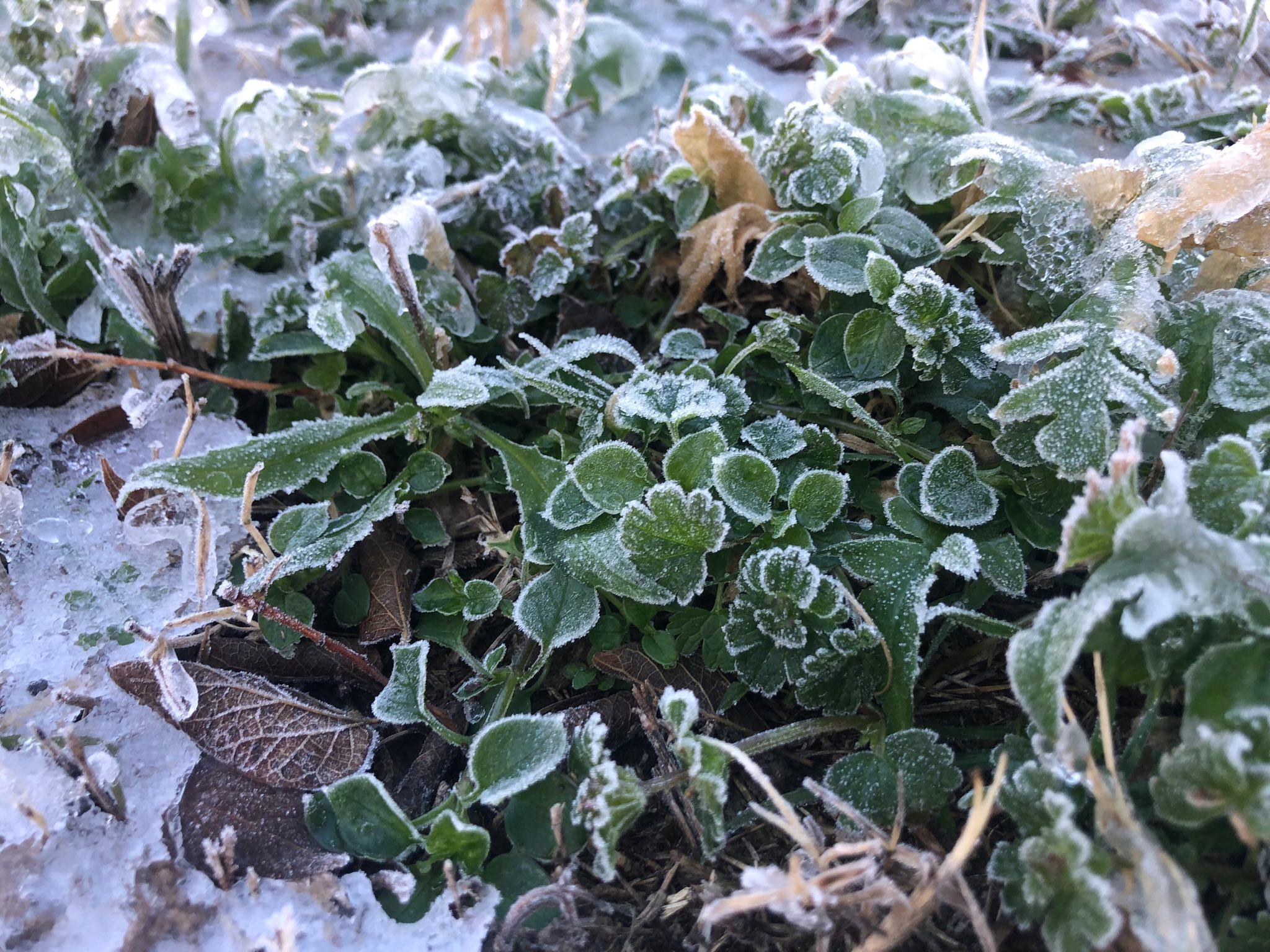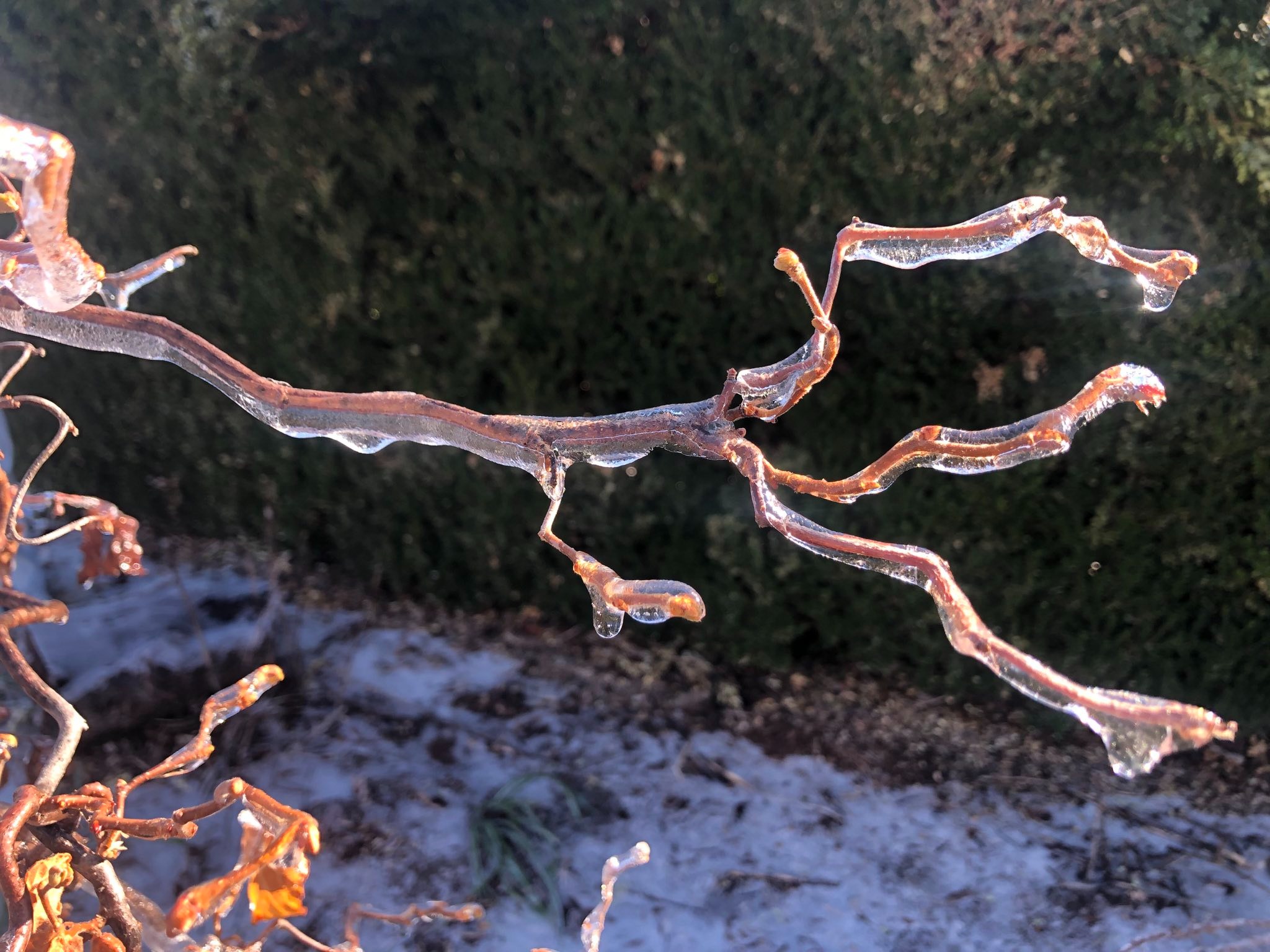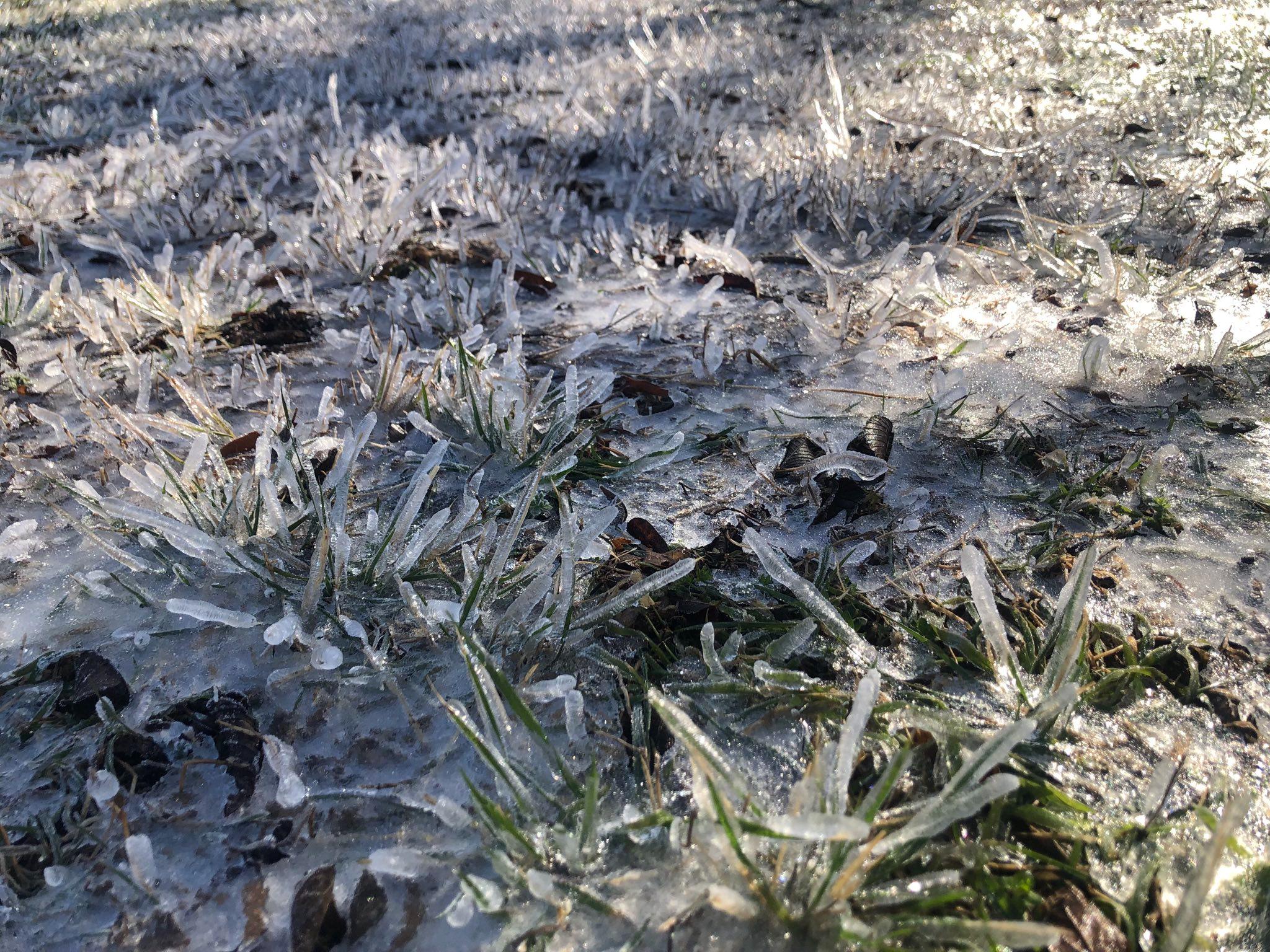 Well, we’ve finally emerged from the frigid ice-box that was North Texas these past few days. Hopefully you’ve been able to shelter your most sensitive plants through cleverly designed micro-climates, deep watering, and judicious use of frost cloth. Frost cloth is remarkably effective in the day time when properly applied: it provides a 5°F to as much as 10° rise in temperatures during the day time. That’s more than adequate for most plants as it brings our lows in the teens up to 25° plus. The danger comes at night when their effectiveness dwindles, leaving plants to rely on adequate water and ground temperature to help them weather the storm.
Well, we’ve finally emerged from the frigid ice-box that was North Texas these past few days. Hopefully you’ve been able to shelter your most sensitive plants through cleverly designed micro-climates, deep watering, and judicious use of frost cloth. Frost cloth is remarkably effective in the day time when properly applied: it provides a 5°F to as much as 10° rise in temperatures during the day time. That’s more than adequate for most plants as it brings our lows in the teens up to 25° plus. The danger comes at night when their effectiveness dwindles, leaving plants to rely on adequate water and ground temperature to help them weather the storm.
The most important thing when evaluating frost or freeze damage is not to panic. Some damage is easy to find: black or mushy leaves and stems are easy to find on non-woody plants and can be removed straight away, but don’t just start pulling out plants. While some damage is normal, many many plants will be able to recover with the first warmup of spring. Some plants will die completely back to the ground only to recover from their ground insulated roots. Other plants will look damaged with curled leaves, some discoloration, and branches that appear dry and dead. For woody plants, shrubs and trees, patience is key. Certain palms, waxleaf ligustrums, oleanders, and gardenias are some example of woody plants that cannot tolerate the cold. Still, give these guys time and wait until spring to give them a fair chance for a proper evaluation.
January is often one of our driest months, but we’ve been blessed with an abundance of precipitation both during and after our most recent hard freeze. As mentioned in a previous article, water is one of the best defenses against freeze damage. Moist soil and mulch hold an immense amount of water, and that water resists changing into ice until it has lost a significant amount of energy. Liquid water will remain at 32°F for quite some time before freezing. This is also why well watered and hydrated plants suffer less damage than dry plants. Additionally, water features and swimming pools will contribute heat and atmospheric moisture (humidity) to the surrounding plants.
 Your frost cloth provides wind protection as well and prevents wind burn on sensitive leaves. Plant location also plays a huge factor here. We mentioned creating a micro-climate for your garden earlier. This means that your most sensitive plants should be on the south side of a structure like a fence or house where they not only get wind protection but also benefit from the direct sun in the daylight. Hardier plants can be placed on the north side of houses, fences, or other structures. The hardiest evergreens can be placed so that they provide shelter from biting north winds for more sensitive plants that are south of this wind block. Finally, brick, stone, and rock, including large boulders, absorb a significant amount of solar radiation during the day that is then released back as heat during the night.
Your frost cloth provides wind protection as well and prevents wind burn on sensitive leaves. Plant location also plays a huge factor here. We mentioned creating a micro-climate for your garden earlier. This means that your most sensitive plants should be on the south side of a structure like a fence or house where they not only get wind protection but also benefit from the direct sun in the daylight. Hardier plants can be placed on the north side of houses, fences, or other structures. The hardiest evergreens can be placed so that they provide shelter from biting north winds for more sensitive plants that are south of this wind block. Finally, brick, stone, and rock, including large boulders, absorb a significant amount of solar radiation during the day that is then released back as heat during the night.
To recap, if you are using some or all of these tactics your plants will stand a much better chance of surviving cold snaps. But after things warm up don’t panic! Some damage is to be expected but many plants are much hardier than people give them credit for. They may look a little sad for a while, but give them a chance until spring to see how well they actually fared before you start cutting limbs and branches or digging them out.
Need help with your irrigation or sprinkler system? Does your garden need an overhaul or just a general checkup? Maybe you just need a helping hand to protect sensitive plants from freeze and frost. Give us a call at 817-202-4808, or drop us a line and contact us here, to find out how Desiree can help you create a wonderful garden with a budget you can afford.
Like what you’re reading? Get information like this delivered straight to your email inbox by signing up here. We will never sell your information, and you can unsubscribe at any time.
 Beginning this weekend, the 17th through the 20th of January 2025 we’re expecting another hard freeze. This means it’s time again to make sure that your plants are adequately taken care of.
Beginning this weekend, the 17th through the 20th of January 2025 we’re expecting another hard freeze. This means it’s time again to make sure that your plants are adequately taken care of.










